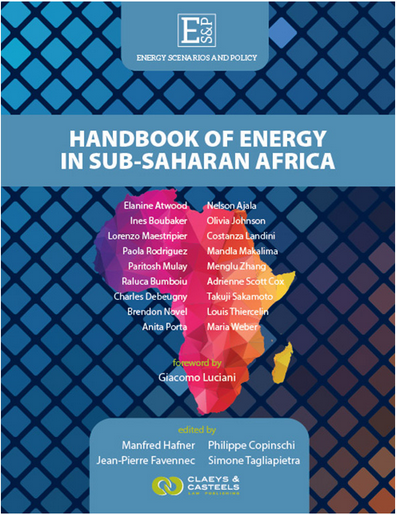Handbook of Energy in Sub-Saharan Africa

14.09.2018
Manfred Hafner, Simone Tagliapietra et al. (Eds.)
Claeys & Casteels
Sub-Saharan Africa is on the move. Since 2000, the region has seen rapid economic growth (with real GDP growth rates outperforming other major regional economic blocs), improving social conditions (with falling infant mortality rates and rising life expectancies) and progressive political liberalization (if in the 1990s only about 5% of African nations were considered to be democracies, today only a handful of the 55 African states do not have a multiparty constitutional system). Notwithstanding the fact that Africa’s energy sector is vital to its socio-economic development, this remains one of the most poorly understood parts of the global energy system. This book seeks to contribute to the understanding of such a topical issue, by providing an analysis of the current trends and future prospects of sub-Saharan energy markets. Issues covered include patterns of energy production, demand and trade; energy investments; energy infrastructure; energy access; energy and development; regional energy cooperation; the role of China in Africa’s energy. The book was carried out by eighteen students supervised by their professors at SciencesPo’s Paris School of International Affairs in the framework of a collective project work in co-operation with the Energy Scenario and Policy (ESP) research program of the Fondazione Eni Enrico Mattei (FEEM) and with the Association for the Development of Energy in Africa (ADEA).
Sub-Saharan Africa is on the move. Since 2000, the region has seen rapid economic growth (with real GDP growth rates outperforming other major regional economic blocs), improving social conditions (with falling infant mortality rates and rising life expectancies) and progressive political liberalization (if in the 1990s only about 5% of African nations were considered to be democracies, today only a handful of the 55 African states do not have a multiparty constitutional system). Notwithstanding the fact that Africa’s energy sector is vital to its socio-economic development, this remains one of the most poorly understood parts of the global energy system. This book seeks to contribute to the understanding of such a topical issue, by providing an analysis of the current trends and future prospects of sub-Saharan energy markets. Issues covered include patterns of energy production, demand and trade; energy investments; energy infrastructure; energy access; energy and development; regional energy cooperation; the role of China in Africa’s energy. The book was carried out by eighteen students supervised by their professors at SciencesPo’s Paris School of International Affairs in the framework of a collective project work in co-operation with the Energy Scenario and Policy (ESP) research program of the Fondazione Eni Enrico Mattei (FEEM) and with the Association for the Development of Energy in Africa (ADEA).
